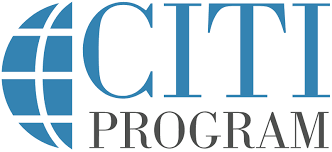Mutagenesis Core Facility
Mission Statement
The mission of the mutagenesis core is to provide UMass Chan Medical School research groups with access to the latest technologies available for introducing targeting genome alterations in human cells and various model organisms. The core will work closely with the Transgenic Animal Modeling Core to facilitate production of new rodent models.
Background
During the past several years, several new technologies have been developed to create sequence-specific nucleases that can create targeted DNA breaks in virtually any non-repetitive region of an organism’s genome (figure 1). Resolution of these breaks by cellular DNA repair pathways can result in either small insertion/deletion mutations or targeted introduction of reporter genes, epitope tags, point mutations or other changes (figure 2). TALENs are a class of these nucleases that have proven to have high activity and low toxicity in model systems such as mice, zebrafish, Drosophila, C. elegans and cultured human cells. They have also been used to create targeted mutations in less genetically tractable organisms including rats, livestock and various insects. Very impressive new data indicates that an alternative technology, CRISPR/Cas9 nucleases, provides a simpler approach for mutagenesis that may be similarly impressive in activity and specificity. Because TALENs and CRISPR/Cas9 nucleases have been reported to create knockout mutations directly in injected mouse and rat embryos, this technology may play a major role in the future creation of disease models in rodents. The goal of the core is to make TALENs, CRISPR/Cas9 nucleases and related mutagenesis design and screening technologies readily accessible to UMASS investigators.
Services
TALENs are currently available for $750 each. Based on the success rate reported in the literature, it is often recommended trying two TALENs for each target. If two tested TALENs are not sufficiently active, the core will produce additional TALENs for the same target at no charge. The cost includes consultation on selecting target sites and TALEN design. The charge is decreased to $500 each after the first 10 orders.
A variety of options are available for TALEN production. All vectors provide the option to produce mRNA for injection into embryos. Available vectors include promoters for either mammalian cells (CAG promoter) or Drosophila cells (minimal actin promoter). In addition, we have constructed vectors for production of heterodimeric TALENs that are predicted to have lower off-target rates. Additional options include TALEN variants that can tolerate methylated CpG sites or that provide higher specificity with possibly lower activity.
CRISPR/Cas9 Nucleases are available for $250 each. At this time, the data for overall success rate and off target cleavage is unknown, but the most recent publications look extremely promising. This system is particularly well-suited for the simultaneous modification of multiple loci. The cost includes consultation on selecting target sites and production of guide RNA constructs.
Additional services are available to facilitate production or screening for mutations in cells or animals. Pricing is dependent on the details of each experimental system and the scale of screening required.
currently provided services include:
- production of capped mRNA for embryo injection
- injection and screening for nuclease-induced mutations in Drosophila
-
other services available include:
- nuclease reporter constructs to rapidly test newly constructed nucleases for activity and to use puro selection to enrich for cells with targeted mutations
- screening nucleases for activity at endogenous loci
- design and construction of donor constructs for site specific introduction of epitope tags, reporter constructs or point mutations
The core will also provide grant support letters describing the availability of consultation and TALEN and CRISPR/CAS9 construction services.
Additional Reading
TALEN and CRISPR/CAS Reviews
Joung, J.K. and J.D. Sander, TALENs: a a widely applicable technology for targeted genome editing. Nat Rev
Mol Cell Biol, 2013. 14(1): p. 49-55.
Charpentier, E. and J.A. Doudna, Biotechnology: Rewriting a genome. Nature, 2013.
495(7439): p. 50-1.
Selected Examples in Cell Culture, Mouse, Fly and Worm
Qiu, Z., et al., High-efficiency and heritable gene targeting in mouse by transcription activator-like
effector nucleases. Nucleic Acids Res, 2013.
Wang, H., et al., One-Step Generation of Mice Carrying Mutations in Multiple Genes by CRISPR/Cas-
Mediated Genome Engineering. Cell, 2013.
Beumer, K.J., et al., Donor DNA Utilization during Gene Targeting with Zinc-finger Nucleases. G3, 2013.
(Drosophila)
Bedell, V.M., et al., In vivo genome editing using a high-efficiency TALEN system. Nature, 2012.
491(7422): p. 114-8. (Zebrafish)
Hockemeyer, D., et al., Genetic engineering of human pluripotent cells using TALE nucleases. Nat
Biotechnol, 2011. 29(8): p. 731-4. (cell culture)
Soldner, F., et al., Generation of isogenic pluripotent stem cells differing exclusively at two early onset
Parkinson point mutations. Cell, 2011. 146(2): p. 318-31. (cell culture)
Wood, A.J., et al., Targeted genome editing across species using ZFNs and TALENs. Science, 2011.
333(6040): p. 307. (C. elegans) species using ZFNs and TALENs. Science, 2011. 333(6040): p. 307. (C. elegans)
Contact Information
The core director is Dr. Michael Brodsky. Questions regarding the core may be directed to him at michael.brodsky@umassmed.edu. Drs. Scot Wolfe and Nathan Lawson at UMass have pioneered using targeted nucleases in zebrafish and act as advisors to the core regarding nuclease construction and mutagenesis approaches.

